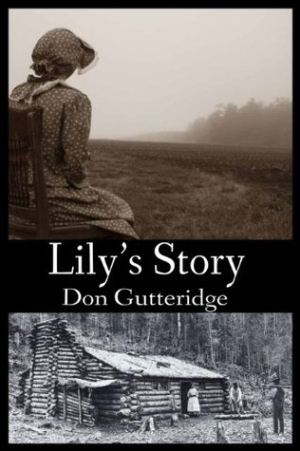Lily's Story
Lily’s Story is a satisfying look at one life as it crosses many eras—from 1840 to the 1920s.
Lily’s Story by Don Gutteridge is an intriguing account of one woman’s life that shows how her identity grows and changes from her rural beginnings through old age.
The book begins with Lily as a child at home in her parents’ cabin in Ontario in 1845. From there the story traces the highs and lows of her life, from her early adulthood, to marriage, raising children, all the way until she faces the end of her life. Gutteridge weaves in historical events both small (like the growth of communities and societies) and large (the Great War).
While Lily’s life and times are worlds away from today’s—a delight for historical fiction lovers—the novel features wholly relatable characters, especially Lily. Her ingenuity, joy, grief, and frustration resonate with the heart of human experience. Since the book traces her life over decades, the most gripping theme is how identity changes, grows and evolves—sometimes slowly and naturally, sometime more quickly and forcefully. The idea of finding out who we are and learning about the people who came before us pulls the narrative forward through all its seasons. The end has a sense of coming full circle—a satisfying wholeness that opens a resonating feeling rather than clipping off loose ends.
The novel contains some familiar, well-loved historical fiction elements of the pioneer lifestyle: from primitive births to difficult travel. But the heart is the network of family and friendships—and friends who are like family—necessary for life in all places and eras, but especially for the remote, high stakes prairie life.
Gutteridge favors simple language and often short sentences, giving the book an inviting plain-spokenness, with depth of insight and no pretension. This style takes root from the opening lines: “Something stirred in the darkness ahead. It made no sound, as yet. But it was present, and alive, or coming alive: she always knew. She did.” He also gives the characters distinct voices marked with colorful phrasing “I want that water hot enough to boil a baker’s bowlin’ balls.”
While the book as a whole is quite lengthy, it’s broken into two books, each divided one into several parts, then into fifty-nine total chapters. This structure keeps the plot and pace moving forward, and allows Gutteridge to transition from place to place and person to person without wasting words. The size and scope of the book will appeal to historical fiction fans who relish detail and development over fast pace and brevity.
Lily’s Story is a satisfying look at one life as it crosses many eras.
Reviewed by
Melissa Wuske
Disclosure: This article is not an endorsement, but a review. The publisher of this book provided free copies of the book and paid a small fee to have their book reviewed by a professional reviewer. Foreword Reviews and Clarion Reviews make no guarantee that the publisher will receive a positive review. Foreword Magazine, Inc. is disclosing this in accordance with the Federal Trade Commission’s 16 CFR, Part 255.

